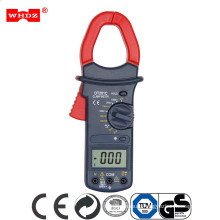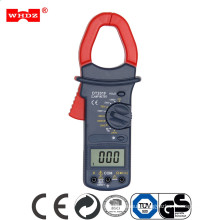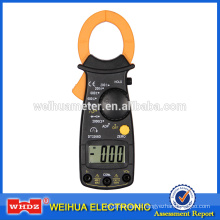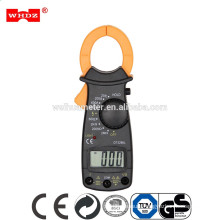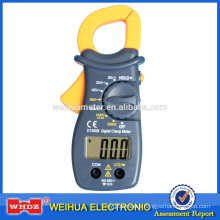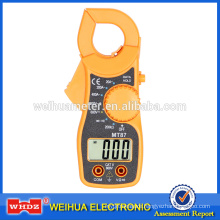Laser active illumination imaging technology
2021-04-25
Laser Active Illumination Imaging Technology Wang Zhi 1 Yang Jian 2 Jin Guang 1 (1. Changchun Institute of Optics, Fine Mechanics and Physics, Chinese Academy of Sciences, Changchun 130031, China; 2 College of Computer Science and Technology, Changchun University of Science and Technology, Changchun 130022, China) New technologies developed in the future. The near-infrared laser is used as an illumination source to detect and image long-distance targets in low illumination conditions. The principle of laser active imaging technology, laser emitting device and receiver technology are expounded in detail. At the same time, the key technologies affecting imaging distance and quality, such as synchronous control technology, synchronous scanning technology and image processing technology, are elaborated. Finally, domestic and foreign Development status and prospects.
Rescue missions, etc.
1 Laser active imaging principle Because of the low brightness in the applications of low light and night vision, remote small dark target detection and deep space target detection imaging, it is seriously affected by the transmission of the atmosphere, especially the backscattering of the atmosphere, making it the most sensitive. The low-light TV system also does not provide sufficient resolution to detect and identify targets, and infrared imaging systems are also limited by low temperature contrast. In order to overcome the above shortcomings, a distance-gated laser active imaging system was designed using a near-infrared pulse laser and a strobe-strong CCD camera, which can detect and identify targets and provide distance information around the clock. The distance-gated laser active imaging technology of the imaging sensor can greatly reduce the influence of atmospheric backscatter on the imaging system and greatly improve the detection range of the imaging system.
The distance gated active imaging system works in much the same way as a laser radar. By adjusting the divergence angle of the emitted laser beam, the target features or all the key features of the target are illuminated to achieve imaging and precise tracking of the target. Radiation pulses and echo signals are transmitted in the atmospheric path, and atmospheric background radiation, transmission, scattering and absorption, and turbulence will all affect the active illumination imaging. Distance gating technology can overcome the influence of the above factors (especially backscattering) on imaging distance and imaging quality. The principle of distance gating is to use pulse laser and strobe CCD camera to separate different distances in time. The scattered light and the optical imaging system are divided into active imaging and passive imaging systems according to the presence or absence of illumination sources. Passive imaging itself has no illumination source, relying on the target or environment to reflect natural light such as the sun or self-radiation, using imaging equipment to pick up weak signals and ultimately image. The active imaging system utilizes an artificial illumination method using an artificial optical radiation source (generally a laser) and a receiver whose receiver is used to collect and detect part of the optical radiation directly or after reflection of the target scene and finally image. In most cases, it is best to use a passive imaging system as long as it meets the requirements. However, in other areas such as: low light and night vision; remote small dark target detection; deep space target imaging. If you still use the full passive mode, you will encounter great difficulties, and some problems will not even be solved. Under such circumstances, rethinking the active working mode of artificial lighting, supplemented by the latest achievements such as distance gate gating technology supported by modern optoelectronic technology and information processing algorithms, provides a good prospect for solving these problems.
Laser active imaging is an active imaging system. It is a new technology that combines laser technology, distance sensing technology of imaging sensors, and imaging processing technology of weak targets. Although it has its own shortcomings in the military, it is passive. Compared with imaging systems, there are also advantages that cannot be replaced. For example, in aviation reconnaissance, passive imaging systems can be used to discover targets and then use active imaging systems to capture more detailed information. Since the exposure time of the camera and the exposure delay of the camera can be controlled in a few nanoseconds, the active imaging system can complete the long-distance capture. In addition, the active imaging system can be used to complete the fund search project in rain, snow, fog and sea: 863 Program (2002AA73 In the laser active imaging system, the synchronous scanning technology is to stimulate the reflected light of the 1994-2012 ChinaAcademicJournal, so that the radiation pulse reflected by the observed target arrives at the camera and imaged just during the CCD camera strobe operation. A very short pulse is emitted, the pulsed laser is transmitted to the target, the target is illuminated, and the laser reflected by the target is returned to the camera. When the laser pulse is on the way back, the CCD camera pass gate (or shutter) is turned off, thus Blocking the backscattered light from the aerosol in the gas. When the reflected light reaches the camera, the gate opens to allow the reflected light from the target to enter the camera. The gate open duration is consistent with the laser pulse. The image is mainly related to the reflected light from the gate time. The resolution is determined by the laser pulse width and the detector gate width. A laser pulse with a width of 1 ns and an imager with a width of 1 ns can provide a range resolution of 30-60 cm. If the strobe pulse width and laser pulse width are both Very narrow, so that only the reflected light near the target can be detected, then the signal-to-noise ratio of the echo signal can be greatly improved.
2 The characteristics of the beam emitted by the laser emitting device are: total optical power, beam width or divergence, the beam intensity distribution cross-sectional shape, and the direction of transmission relative to the target. At present, there are two widely used laser bands in defense technology: 1.06* for yttrium aluminum garnet (YAG) laser and 10.6 for carbon dioxide (C2) laser. The former is 0.532Pm after frequency doubling, and the transmitting and receiving optical systems are easy to design and easy to detect. The disadvantage is that the ability to penetrate the battlefield smoke is poor. 1. The 54* wavelength laser has high safety to the human eye, and its auxiliary illumination intensity is much higher than that of the conventional photocathode sensitive short-wavelength.
And the performance of penetrating battlefield smoke is better than 1.06. Carbon dioxide (CO2) laser, its emission wavelength is 10.6, for human eyes, and the atmospheric penetration performance is good, but its optical system design is more complex 3 receiver receiver Characteristics are characterized by receiving techniques, collection area, optical efficiency, and detection efficiency. Two different optical detection techniques are generally used, namely direct detection, heterodyne or coherent detection.
In most laser active imaging systems, direct detection techniques are employed in which the received light energy is focused on a photosensitive element to produce a voltage (or current) proportional to the power of the incident light. This process is consistent with traditional passive optical receivers or typical laser rangefinders.
Block Diagram of Direct Probing Laser Active Imaging System In optical analysis, the aperture of the receiver often uses an effective aperture smaller than the actual aperture to account for losses in the optical chain of the receiver. At the same time, the receiver is required to have an external trigger function, high spatial resolution and quantum efficiency, low noise, and sufficient gain dynamic range. The working wavelength of GaAsP photocathode tube is 532nm, the quantum efficiency is close to 50%. The signal-to-noise ratio of the optional CCD-coupled photodiode is more than 10dB. The gating capacity of the third-generation tube is better than that of the four key technologies. 4.1 Synchronous control technology distance gating The timing diagram determines the timing and corresponding delay relationship between the illumination pulse of the laser and the camera strobe pulse according to the requirements of the distance gated imaging system, and designs a synchronous control circuit. The synchronous control circuit is mainly composed of a timing circuit that synchronizes the shutter opening with the laser irradiation, generates illumination pulses and camera strobe pulses, and has adjustable pulse width and delay.
4.2 Synchronous scanning technology The optical device and the receiver are placed at a distance of two distances. The optical axis of the beam illuminating the distant target is almost along the optical axis of the receiver, and intersects with the optical axis of the receiver at an angle of the observed area. In this way, the backscattered light of the atmosphere enters the receiver as little as possible. If the geometric configuration is appropriate, the influence of atmospheric backscattering can be effectively reduced, and the detection distance is greatly increased. At present, the overseas underwater photoelectric detection system adopts synchronous scanning technology. .
4.3 Image Processing Technology In determining the divergence angle of the laser, the peak power of the laser pulse, and the parameters of the receiving imaging system, the maximum distance detectable by the laser active imaging system is mainly limited by the image processing technology. In the field of domestic application of laser active imaging technology, almost no image processing technology is used to improve the detection range of the imaging system, and most rely on increasing the peak power of the laser pulse. Limited by the development level of laser devices, simply increasing the pulse peak power and the frequency of pulse emission is one of the factors that restrict the further development of laser active imaging technology. The multi-frame image data collected by the illumination sub-area is used to eliminate the influence of shot noise and atmospheric disturbance, and finally the post-processing algorithm of the image information is used to mitigate the influence of atmospheric backscatter.
5 Development status and prospects The application research of laser active imaging technology has just begun in China, and some countries such as the United States and Canada have a few years of research history, and have developed a variety of active imaging systems, such as: two generations of active imaging in Canada. Systems (ALBEDOS) and (ELVISS): The ALBEDOS Active Imaging System is based on a powerful Laser Diode array illuminator and a range gate camera coupled to a 48x zoom lens. Due to the use of distance gating, the system is not sensitive to backscattering, such as in the field of view of the Sensor, and is not sensitive to the presence of mist, snow or rain, and is suitable for working in poor weather conditions at night. The ELVISS multi-sensor system is powered by an improved ALBEDOS active imager, which is coupled to two separate thermal imaging cameras. It also has a matching ground imaging system that can be more accurately executed in the United States. Laser active imaging technology applications are required. The long-distance high-resolution image of the laser active imaging system is mainly limited by several factors. These include: atmospheric turbulence, continuous shot noise, backscattering of suspended particles, and the energy of the laser. Atmospheric turbulence in long oblique paths can cause severe image distortion and non-isotropic effects. The continuous interference from the reflected laser illumination causes the image to have a certain brightness spot, which increases the noise of the image. As the detection distance increases, the radiant energy reflected back from the target is inversely proportional to the square of the distance, which will result in an increase in the output energy of the laser. In addition, the backscattering of the atmosphere is sufficient to annihilate the useful signal reflected back from the target, especially when increasing the energy of the laser.
In order to solve the above problem, an image processing method should be adopted to acquire and post-process multi-frame image data. The amount of radiation is used to determine the search or rescue mission for each exposure time.
A distance gating, laser-illuminated two-dimensional imaging system developed by Intevac, USA, which works in the 1500nm-1600nm band, which is harmless to the human eye. The system uses laser pulses to illuminate the target area, and the high-frequency efficiency short-wave infrared photocathode Imaging on. Using the distance gating technique, only the radiation reflected by the target area is collected, so that only the laser beam covering portion and the depth of field determined during the gate time can be reflected in the image. Due to the distance gating technology, the scattering caused by the scattering of atmospheric suspended particles, dust or mist is reduced in the path where the light reaches the target, and the influence of the background light is also eliminated, which increases the contrast of the target. .
4ym-2. (Pm, in the range of this wavelength, a narrow pulsed Nd:YAG laser (coaxial transceiver layout as shown) is used.
In this system, the image processing technology of multi-frame post-processing is adopted, and under the condition of optimizing the equipment, the imaging distance is up to 50km. The development trend of laser gating active imaging technology is as follows: for human eyes; super long distance ( >20km); tactical aiming and identification of targets, can be used as equipment for airborne, ground vehicle and soldier deployment; combined with advanced image processing technology to improve the resolution of ultra-long-distance target images. The distance gating imaging system can obtain the distance information of the target, and can image through the scattering medium, can fundamentally overcome the shortcomings of passive imaging, can work under all-weather and zero illumination conditions, and has important practical value in civil and military. Wide application prospects.
Laser rangefinder module, which has two application, one is mainly designed for long distance range finder, another is for secondary development industrial laser distance sensor, which support ttl/usb/rs232/rs485 adapter output data.
With different range measuring program, JRT laser measure tools module, can satisfy customers` different requirements, 200m, 300m, 500m, 1000m, 1200m, 1500m, 3000m.
We have been in this line for 10 years, with a strong R&D ability and hard working, we are now a leading supplier of laser distance meter modules in China.
Product Specifications:
|
Measuring Range (without Reflection) |
5-500m/5-1000m/5-1500m/5-3000m |
|
Measuring Accuracy |
±0.5m~±1 m |
|
Laser Class |
Class 2 |
|
Laser Type |
905nm |
|
Magnification |
6X |
|
Battery type |
CR2-3V |
|
Operating Temperature |
-10-50 ℃ (14-122 ℉ ) |
|
Size |
28*69*60mm/TC25-43*φ25mm |
|
Weight |
About 15g |
|
Operating Temperature |
-10-50 ℃ (14-122 ℉ ) |
|
Storage Temperature |
-25~60 ℃ (-13~140 ℉) |
Laser Rangefinder Sensor, Laser Range finder Sensor, Laser Rangefinder Module, Laser Range Finder Module
Metal Detector, Multimeter Co., Lt d http://www.accuracysensor.com



